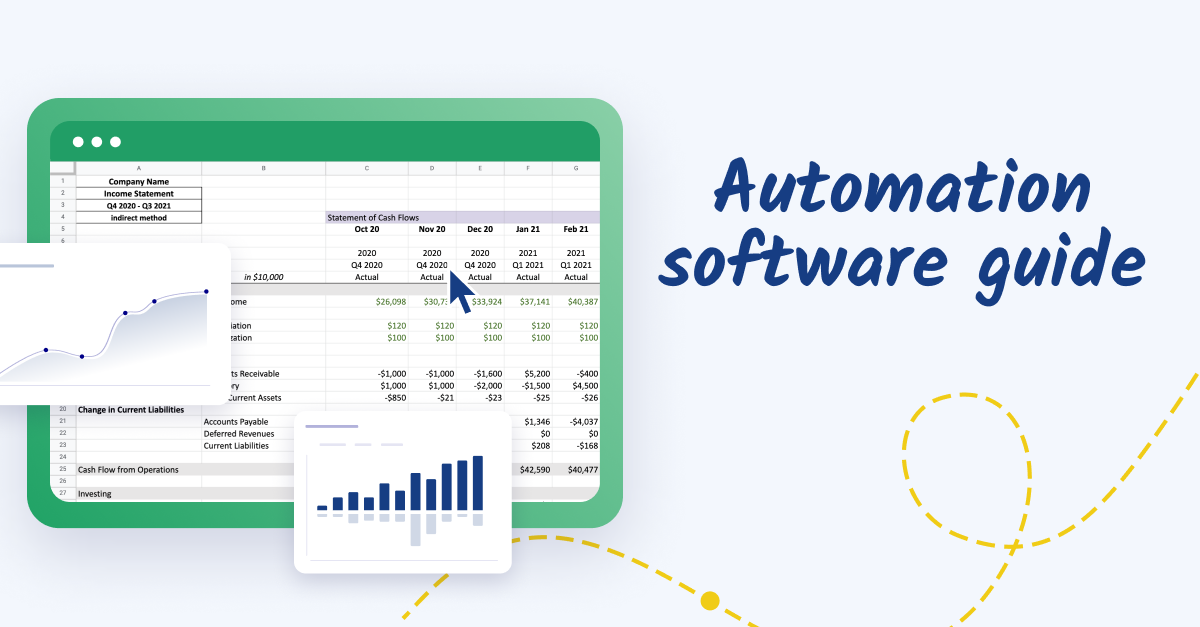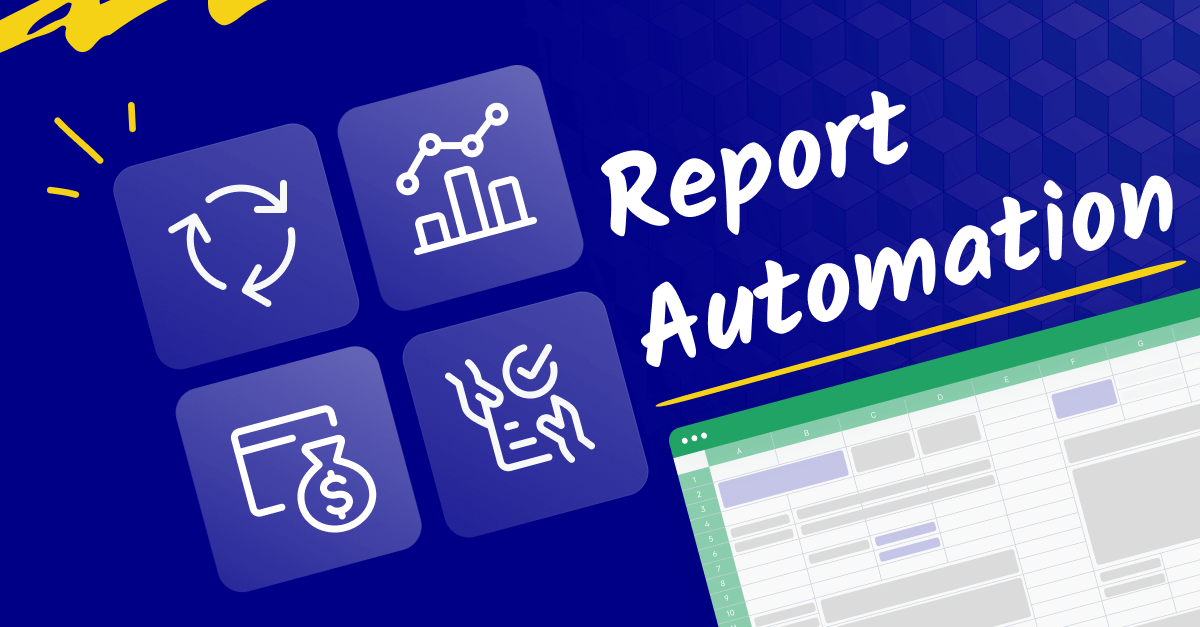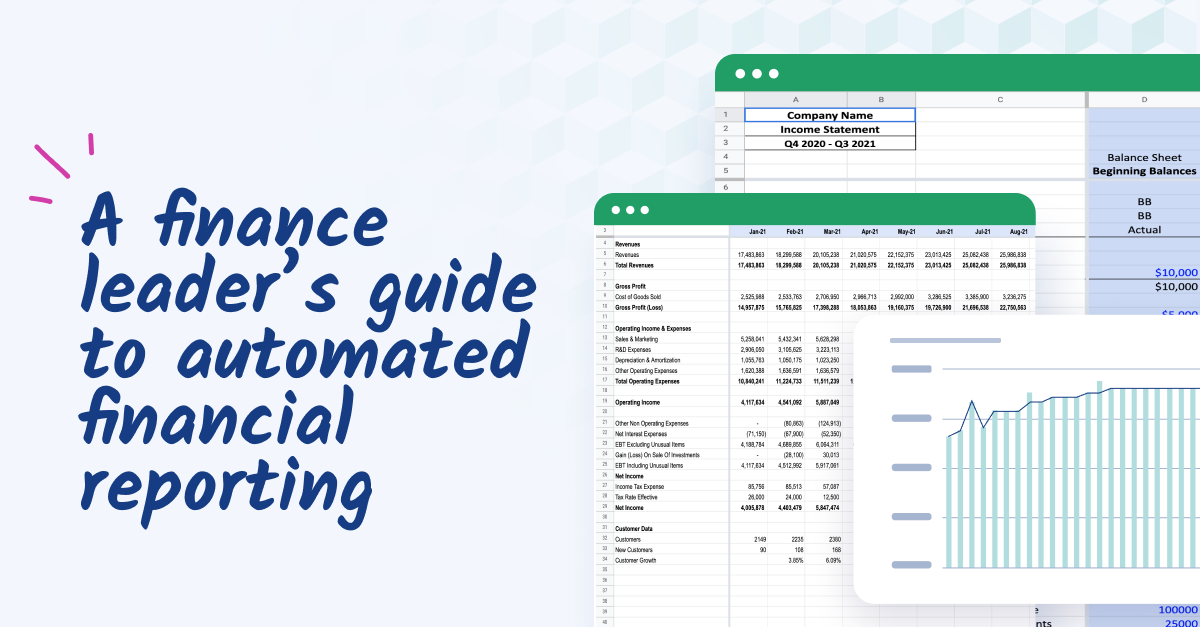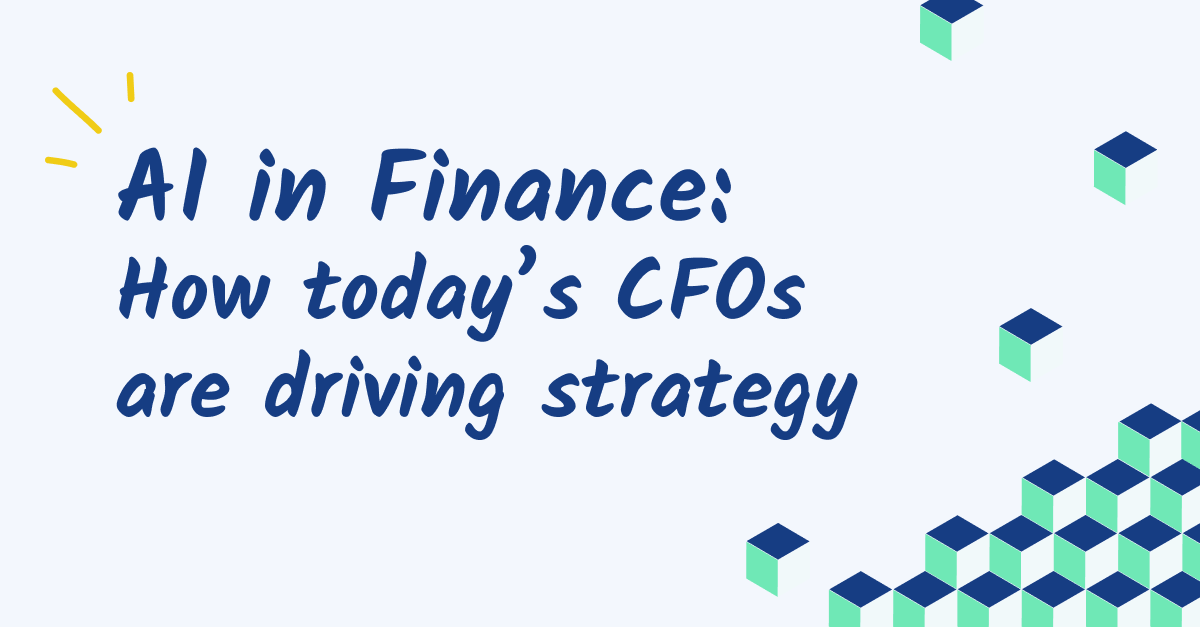Finance automation: not a luxury, but a necessity
Today, companies are dealing with more transactions, complex financial operations, and the need for timely financial insights than ever. Automation tools address these challenges by streamlining repetitive tasks like manual data entry, invoicing, and reporting, which significantly reduces manual tasks and errors.
For instance, a mid-sized company might use automation to process invoices faster, improving cash flow and supplier relationships. Or consider a firm that automates its budgeting and forecasting, gaining real-time financial insights that help adjust to market changes swiftly. Automation can transform a finance department, allowing them to focus less on routine, manual tasks and more on strategic analysis and decision-making. It's becoming essential for mid-sized companies to manage their financial operations effectively and stay competitive.

Key features to look for in finance automation software
When selecting a finance automation tool for a mid-sized company, there are several critical features to consider. These features not only determine how well the software will meet your current needs but also its ability to adapt to future growth and changes in the financial landscape. Let's delve into some of these key features and understand their significance in the context of a mid-sized company.
Integration capabilities
The software should seamlessly integrate with your existing systems—like ERP, CRM, and other financial tools. This integration ensures that data flows smoothly between systems, eliminating the need for manual tasks like data entry and reducing the risk of errors.
For example, when your finance automation tool integrates well with your ERP system, financial data such as invoices and purchase orders can be processed and reconciled automatically, saving time and increasing accuracy.
Real-time data processing
In the fast-moving financial world, having access to up-to-date information is essential for making timely decisions. A finance automation tool that processes data in real-time can provide instant financial insights, enabling you to respond quickly to market changes or internal financial queries.
This feature can be particularly beneficial during financial closing periods or when performing month-end reconciliations, as it provides immediate visibility into financial status.
Scalability
As your business grows, your finance automation solution should be able to grow with it. Scalable software can handle an increasing volume of transactions and more complex finance operations without a drop in performance. This means you won't need to invest in new software every time your company reaches a new stage of growth.
User-friendliness
The software should be intuitive and easy to use, requiring minimal training. User-friendly tools ensure that your finance department can utilize features to the fullest without getting bogged down by a steep learning curve. This is particularly important in mid-sized companies where finance teams might be smaller and resources more limited.
Assessing your company's specific needs
Selecting the right finance automation solution requires a clear understanding of your company's unique needs and objectives. This understanding ensures that the software you choose not only fits with your current processes but also supports your company's future goals.
Here's how to evaluate your company's specific requirements:
1. Consider your company size
The size of your company often dictates the complexity of your financial processes and the volume of transactions you handle. For a mid-sized company, you need software that strikes the right balance—robust enough to handle complex processes but not so complex that it's cumbersome for a smaller team to manage.
2. Examine your existing systems
The new software should integrate well with the tools you're already using. Look at your current ERP, CRM, and other financial tools, and consider how the new software will work alongside these. Integration is key to ensuring seamless data flow and maintaining consistency across different business functions.
3. Identify the specific financial processes that need automation
This might include accounts payable, accounts receivable, budgeting, forecasting, financial planning, or financial reporting. By pinpointing these areas, you can focus on finding software that excels in these specific functions.
Consider these factors:
- Volume of transactions: How many financial transactions does your company process daily, weekly, or monthly? Ensure the software can handle your transaction volume efficiently.
- Regulatory compliance needs: Are there specific compliance standards your industry or sector must adhere to? Choose software that helps you meet these requirements.
- Customization requirements: Does your company have unique financial processes that require customizable software solutions?
4. Align software capabilities with your company goals
The software should not only solve your current challenges but also support your long-term business objectives. Whether it's growth, diversification, or improved efficiency, your chosen software should be a tool that helps drive these goals forward.
Navigating the market: how to compare and contrast software options
Choosing the right finance automation platform from a market brimming with options can be daunting. To navigate this landscape effectively, adopting a strategic approach to researching and comparing different software is crucial. This approach ensures you find a solution that aligns well with your specific needs and company objectives.
1. Start by conducting thorough research
Look beyond the marketing materials and delve into the specifics of each software option. Compare their features, scalability, integration capabilities, and user-friendliness. This comparison should be tailored to the unique requirements you've identified for your company.
➡️ Check out our Ultimate Guide to FP&A Software for an in-depth look at the top 13 software options on the market. ⬅️
2. Read reviews from other users
Reviews can provide insights into real-world application, performance, and potential challenges with the software. Look for reviews from companies similar in size or industry to yours, as their experiences are likely to be more relevant to your situation.
3. Seek demos
A demo allows you to see the software in action, giving you a better understanding of how it functions and how intuitive it is to use. During a demo, you can ask specific questions related to your business needs and assess the software's ease of use and functionality.
4. Consult with industry peers
Consulting with industry peers can provide you with first-hand accounts of their experiences with different software. Reach out to your professional network or participate in industry forums and discussions. Your peers can offer valuable insights that you might not find in official documentation or reviews.
5. Don’t overlook vendor support and service
Reliable customer support and accessible service are crucial, especially during the initial phases of implementation and integration. Consider vendors who provide comprehensive support, including training, onboarding assistance, and responsive customer service. Evaluate the vendor's reputation for ongoing support and updates post-implementation.
Conclusion: finding the right fit
Selecting the right finance automation software is a critical decision that can significantly impact the efficiency and effectiveness of your company's financial operations. By understanding your specific needs, carefully evaluating the market options, and considering factors like integration, scalability, user-friendliness, and vendor support, you can make an informed choice that aligns with your business objectives.
Remember, the goal is to find a solution that not only addresses your current challenges but also supports your company's growth and evolution. To learn how Cube can help you reach your goals, request a free demo today.



.png)



.png)





